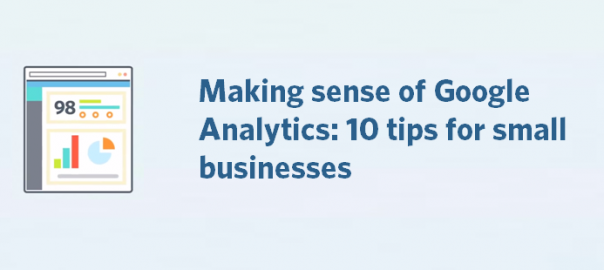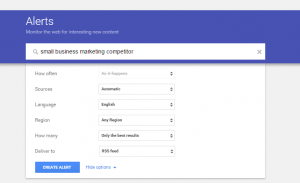
Google Analytics offers a truly extensive range of actionable data. It will show you who’s browsing your website, how they’re using it and how they found you. Without analytics, you rely on guesswork (and guesswork is a terrible business model).
The problem is that it can be tricky to identify the metrics that really matter the most. To help, we’ve put together some useful tips to help you unearth usable business insight with minimum effort.
Check average session duration
This refers to the average length of time your visitors are spending on your website. Generally the longer people spend on your website, the better they are engaging with your content. If you are producing a bunch of content but the average session duration is below one minute, there’s a problem. Your visitors either can’t find your content, or they don’t find it interesting.
Find out why visitors are leaving your website
Bounce rate refers to the percentage of sessions where your visitor leaves your website from the same page they entered. There are a number of explanations for a high Bounce rate. Your visitors may simply find the information they need on the first page. Alternatively they may experience navigation or usability issues.
You can also use Google Analytics to find the pages your visitors most frequently leave your website from. These are called ‘exit pages’ and each page of your website will have an ‘exit rate. This information is crucial for optimising key user journeys, such as a registration process or completing an online purchase.
Compare historic visitor data
Sign in to Google Analytics and the date ranges will be one of the first things you see. A neat trick is to compare two distinct time periods with one another — for example, September 2015 with September 2014 — to see how your visitor data has changed over time.
Location, location, location
Where your visitors live (or work) may or may not be important to you. It depends on the type of business you run, but if you are seeing unexpected spikes in traffic from certain locations, it’s worth investigating. You might discover something new about your target audience that could be helpful for future planning.
Find out what content resonates your audience
Hit the ‘visitors’ tab and Google Analytics allows you to arrange your visitor data based on the number of times each user has visited your website. You can also see the average number of days between their visits – and the type of content they engage with most. It’s a great way to zero in on the type of content that resonates most with your audience.
Segments allow you to keep everyone happy
Google Analytics’ ‘segment’ function allows you to see how different groups of users behave on your website. For example, you could compare:
- direct visits Vs visits from social media;
- desktop users Vs visits from a mobile device;
- returning users Vs single session users.
Different types of users will use your website for different reasons. The ‘segments’ function can help you find out how to optimise your website for all the groups that matter to you.
Find out what your visitors really want
Got a search box on your website? With Google Analytics you can capture data on every single search query. It’s a free class ticket when it comes to finding out what your visitors want. You can then create the content that people are looking for – and strengthen your SEO efforts too. Enable site search by hitting Admin > View settings.
Make use of Intelligence Events
Intelligence events might sound like something out of a sci-fi film, but it’s actually pretty simple. Basically they are alerts that email you when a specific event takes place – such as sudden spikes in traffic. A clever way to use ‘intelligence events’ is to get alerts for traffic to your error pages – which suggests there are some broken links that you should fix tout de suite.
Set up Goals to monitor conversion rates
The ‘goals’ function allows you to track how frequently certain actions are performed on your website. For example, let’s say you want to track how often visitors are subscribing to your newsletter. All you need to do is set up a page that thanks new subscribers for signing up – and then define that page as a goal in Google Analytics. You will then be able to crunch the numbers on what percentage of your visitors sign up to your newsletter. You can set up ‘goals’ via Admin > View settings.
Don’t miss the shortcuts
On the left side of your Google Analytics dashboard is a link called ‘shortcuts’. It lets you quickly navigate to your favourite reports. If there’s a piece of data that you want to keep a close eye on, hit the ‘shortcut’ link above the data to bookmark it in your ‘shortcuts’ menu. Simple.
Bonus tip: Filter out internal traffic
Chances are you and your staff visit your website pretty frequently. That can skew your Google Analytics data. For the most honest representation of how your target audience are using your site, you need to try and filter out internal visits.
Luckily, Google knows this and has made it (relatively) easy to fix. Firstly, run a Google search query: “what’s my IP” to retrieve your public IP address. Next, in Google Analytics, navigate to Admin > All filters.
You can then use the options to tell Google to ignore traffic from specific IP addresses. (Note that you will need admin permissions at the account level to create the filter.)
Over to you…!
Google Analytics is a powerful, yet easy way to crunch the data on how people are using your website. Most importantly it’s free. If you have yet to set up your account, now’s the time to dive in. And if you’re already monitoring your stats, try some of our tips to see how they work for you. Happy tracking.
Business & Finance Articles on Business 2 Community(88)






